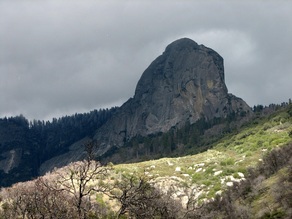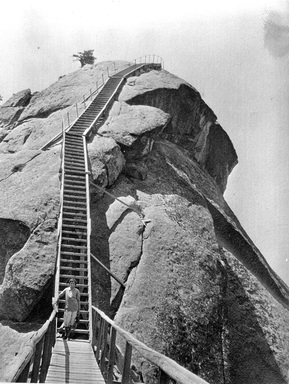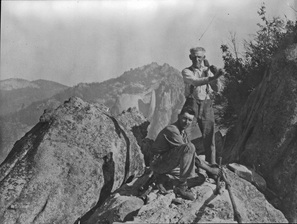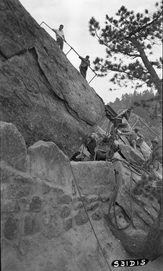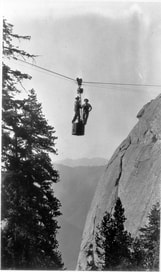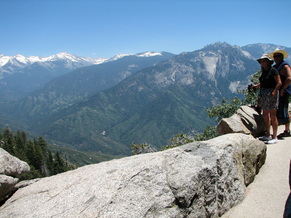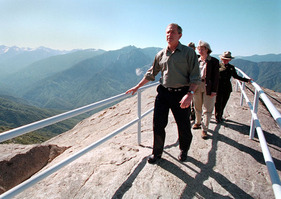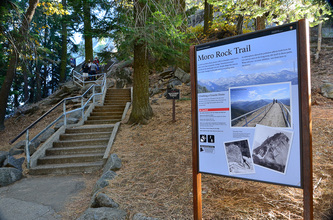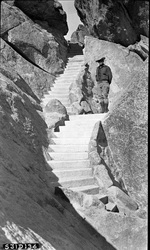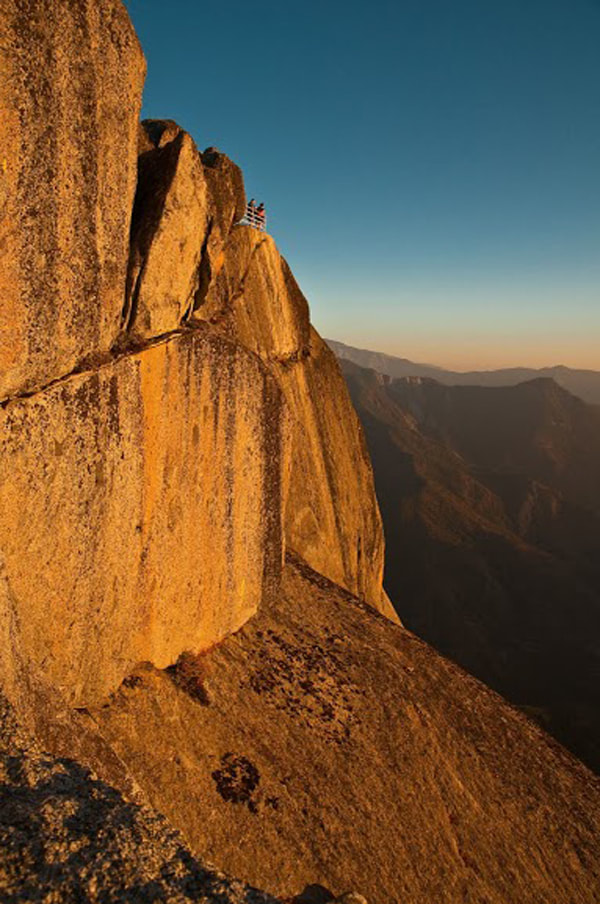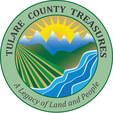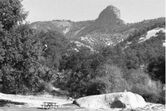 Moro Rock from Hospital Rock Moro Rock from Hospital Rock
"As you enter Sequoia National Park, Moro Rock looms overhead, thousands of feet above the highway. This large granite dome is a spectacular geologic feature that can be enjoyed from above or below." --- National Park Service
|
MORO ROCK STAIRWAY
Environment: Mountains, National Park, granite dome, steep 1/4 mile stairway ascends @ 300' (91.4 m) and @ 400 steps to top of rock (about .25 mi one way to summit; from @6400' to summit elevation @ 6720') Activities: birdwatching, climbing stairway, educational activities (signage and Ranger walks and talks), photography, picnicking, scenic views, wildlife viewing Open: daily (fee to enter National Park); road from Giant Forest Village to Moro Rock closed to vehicle traffic in winter; climbing the stairway is NOT recommended when thunder and lightning are in the area. The Park is always open, weather permitting (unless closed due to emergency conditions). Site Steward: Sequoia National Park, 559-565-3341; www.nps.gov/seki Opportunities for Involvement: donate, volunteer Links: 1) Moro Rock (SEKI) Rock Climbing; 2) Sequoia Kings Canyon - Plan Your Visit; 3) Sierra Nevada Geotourism - Moro Rock; 4) NPS Moro Rock; 6) National Register of Historic Places Nomination Books: Challenge of the Big Trees -The History of Sequoia and Kings Canyon National Parks-Revised Edition by William C. Tweed and Lary M. Dilsaver (George F. Thompson Publishing, 2017) Directions: Map and directions are at the bottom of this page. |
|
Photos for this article by: John Greening and Laurie Schwaller; and courtesy of David Baselt, Jennifer Bourn/inspired imperfection.com, Geo Press, Kevin Gong/kevingong.com, Alice Kao/backcountycow.com, National Park Service, Sequoia & Kings Canyon National Parks Archives, Michael Wall, and White House Archives, Paul Morse photo
|
Directions:
Address: Sequoia National Park Latitude/Longitude: Degrees Minutes Seconds: Latitude: 36-32'39'' N, Longitude: 118-45'54'' W Decimal Degrees: Latitude: 36.5441116, Longitude: -118.765098 From Visalia take Hwy 198 (Generals Hwy) east through Three Rivers into Sequoia National Park (entrance fee). As you enter the Giant Forest Village area follow the signs and turn right onto the road to Crescent Meadow and Moro Rock parking lot (road closed to vehicle traffic in winter; RVs and trailers not recommended; shuttle service available in summer). |
